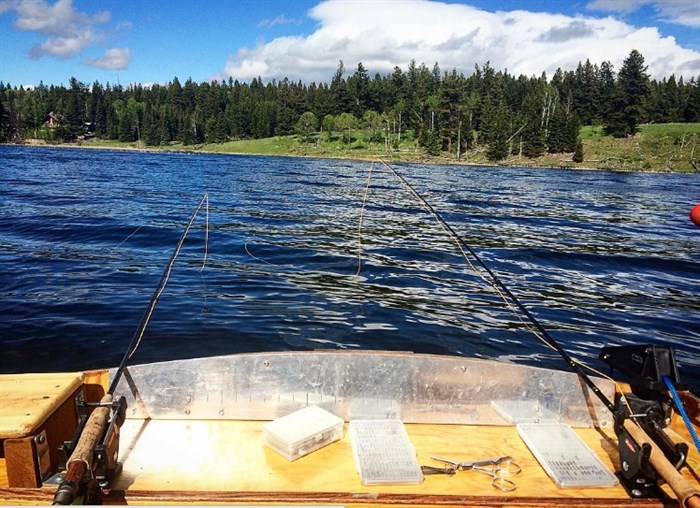
Image Credit: dimitriroussanidis via Instagram
August 11, 2025 - 5:00 AM
The next time you’re planning a day out on Okanagan Lake or a dip in the Thompson River and you check your weather app, see a forecast on TV or a post on social media, think about the equipment and math a meteorologist used to get you that warm and sunny prediction.
Data from a laundry list of equipment from satellites to thermometers gets fed into a series of computer programs that model the conditions in the atmosphere so a meteorologist like Environment Canada’s Brian Proctor can tell you whether to pack sunscreen or an umbrella.
“It's largely done through the use of computer models. And how things are behaving from a computer model point of view, let's say we've got a system coming out of the B.C. coast today, where was that system a week ago or 10 days ago that caused that?” Proctor said.
Proctor said that using several different computer models is the best way to predict the weather, but at the moment it’s impossible to actually take every factor into consideration.
“Oftentimes there's phenomena occurring within the atmosphere that can't be directly solved by computer models,” he said. “You can't resolve all the things we need to measure at all the scales we need to measure to do the math to solve all the equations of motion that guide things occurring in the atmosphere.”
We would need more and more measurements and gigantic computers to attempt to perfectly predict the weather in every corner of the Okanagan Valley and Proctor said it just isn’t feasible. The other factor that makes predicting the weather particularly challenging is the terrain in the Okanagan.
Mountains create an effect known as a rain shadow since they shield downwind areas from precipitation making them drier.
“You think about the rain shadow as we come across the Coast Mountains there for Princeton and Merritt and Kamloops stretching across the Okanagan Valley. But by the time we start ramping up the elevations as you move up into the Shuswap and the Shuswap Highlands, how much of an effect that (terrain) can have on the precipitation that we record?” he said.
A lot of weather forecasting is trying to turn math and atmospheric science into something people can actually understand.
“Humidex is how the weather feels to the average person and combines the effects of temperature and humidity,” he said.
In Canada we use humidex, but in the U.S. they use a heat index to measure humidity. Heat index is measuring how much moisture is in the air relative to how much moisture they air could hold at a given temperature.
Proctor said heat index is a more scientifically accurate measurement for humidity, while humidex gives a more practical figure for how you’re actually going to feel when you step outside.
It’s for a similar reason that Environment Canada won’t say there's a 50 per cent chance of precipitation.
“We've done some public outreach, it came out to the fact that the public really didn't understand what 50 per cent meant,” he said. “They wanted a better sort of idea if it's going to be a better chance of seeing precipitation or a lower chance of seeing precipitation, which is why we opted for 30, 40 or sort of 60 and above values to a large degree.”
Forecasters make adjustments in the math computer models put out in order to correct issues with the program and make adjustments to the numbers to help communicate with people better.
Proctor said some weather apps simply display what a forecasting computer model predicts without those corrections from a meteorologist. So, when it comes to moments when you need the best forecast possible, it’s best to go to a person rather than rely on a computer, or the latest iteration of AI.
“The apps typically are driven by a computer model or a couple of computer models, they have no forecaster intervention in them,” he said. “Oftentimes you can see a little bit of a difference between what your weather apps are telling you and what the actual forecaster warning is telling you.”
To contact a reporter for this story, email Jesse Tomas or call 250-488-3065 or email the editor. You can also submit photos, videos or news tips to the newsroom and be entered to win a monthly prize draw. Find our Journalism Ethics policy here.
We welcome your comments and opinions on our stories but play nice. We won't censor or delete comments unless they contain off-topic statements or links, unnecessary vulgarity, false facts, spam or obviously fake profiles. If you have any concerns about what you see in comments, email the editor in the link above. SUBSCRIBE to our awesome newsletter here.
News from © iNFOnews, 2025